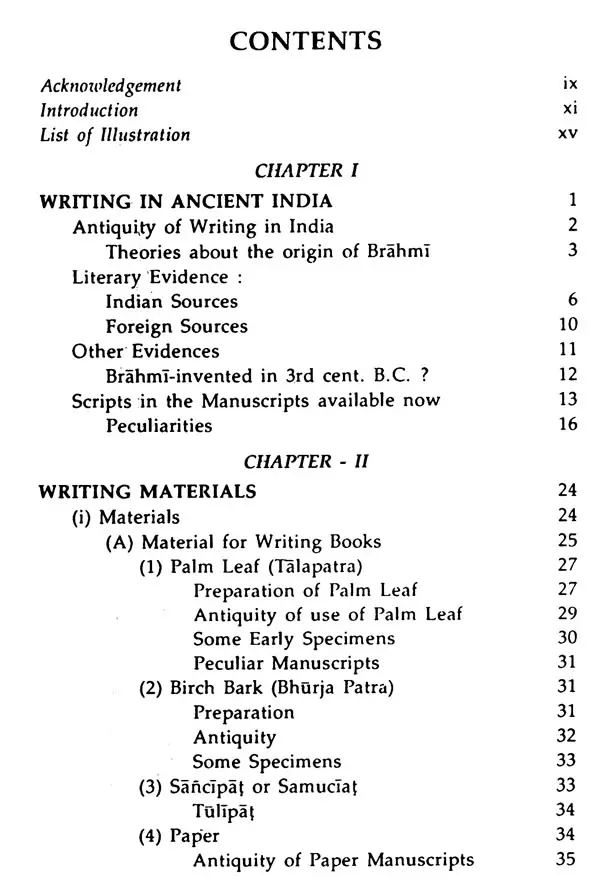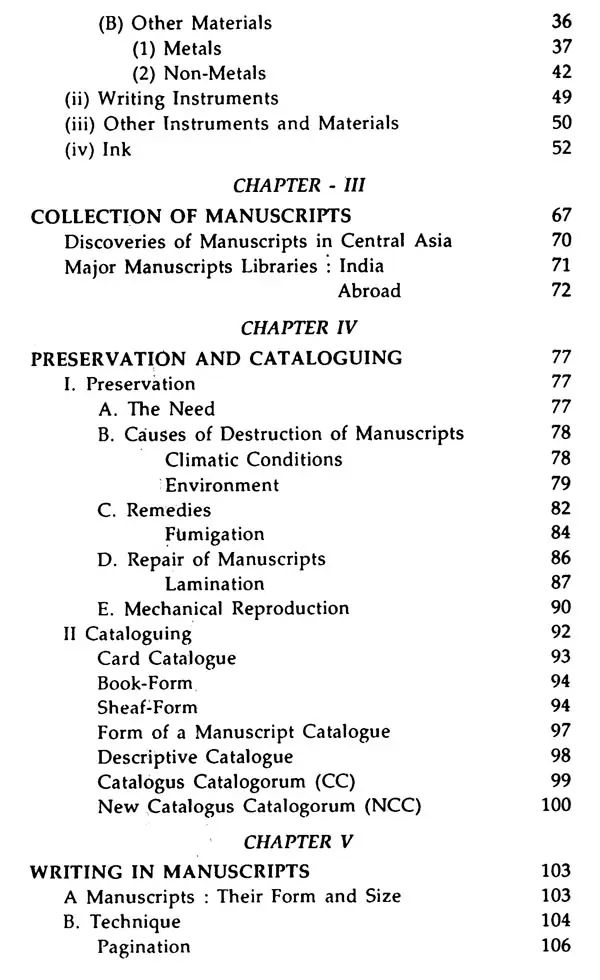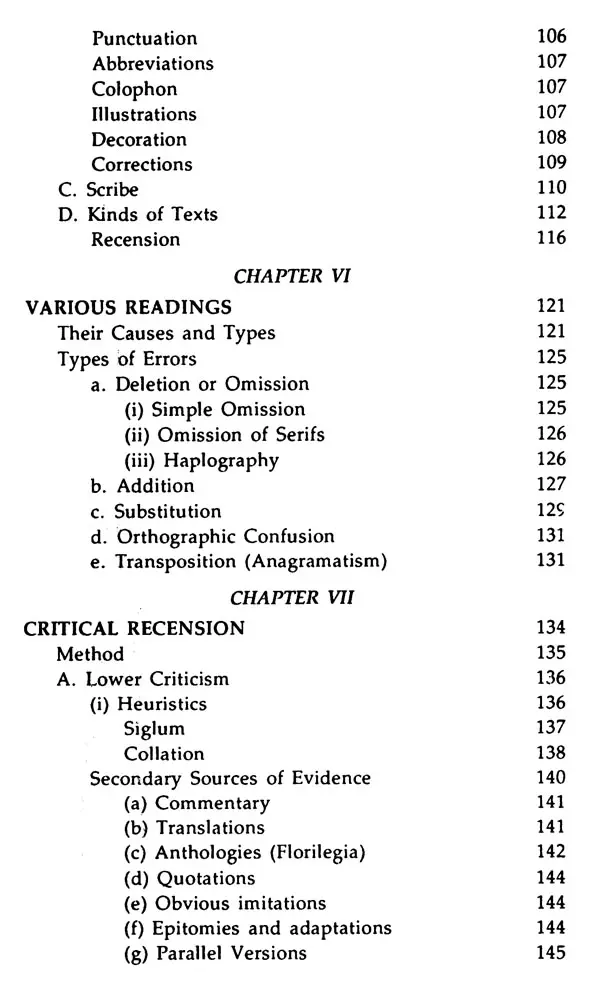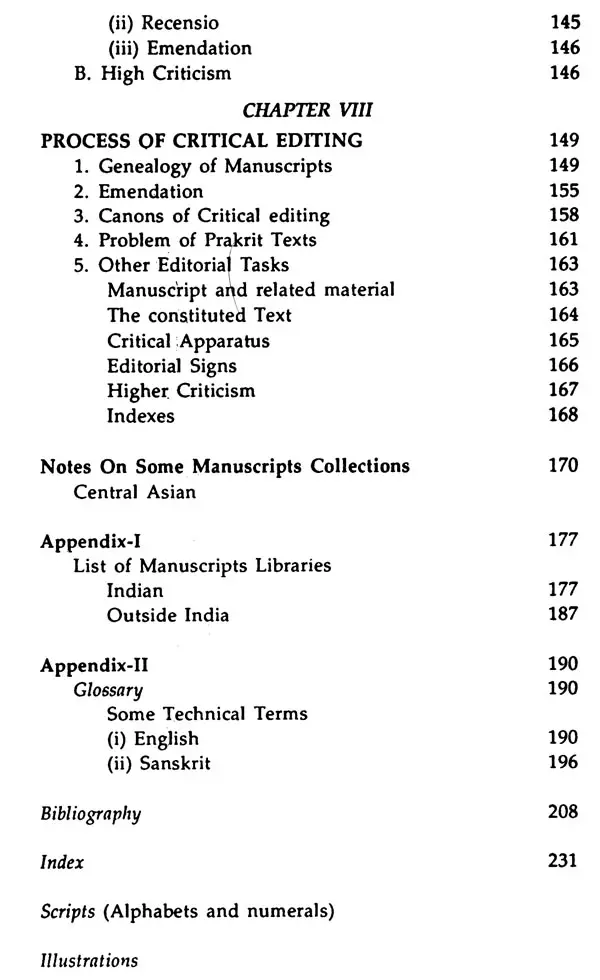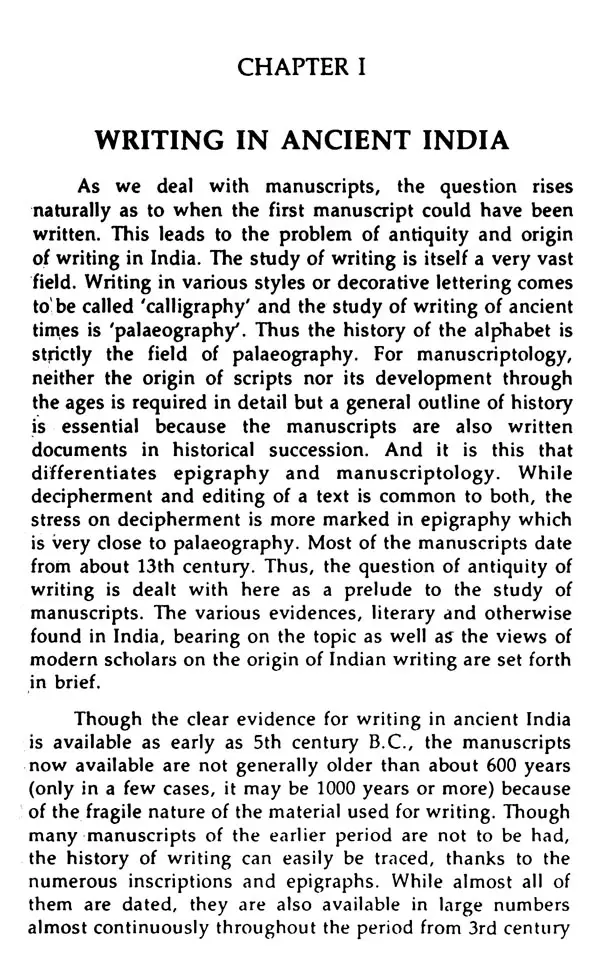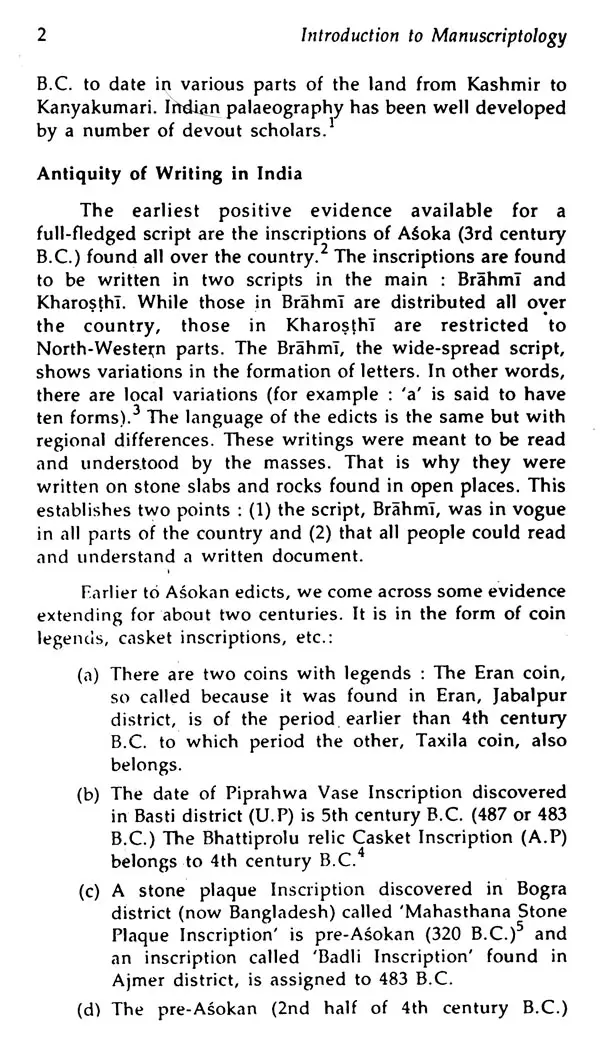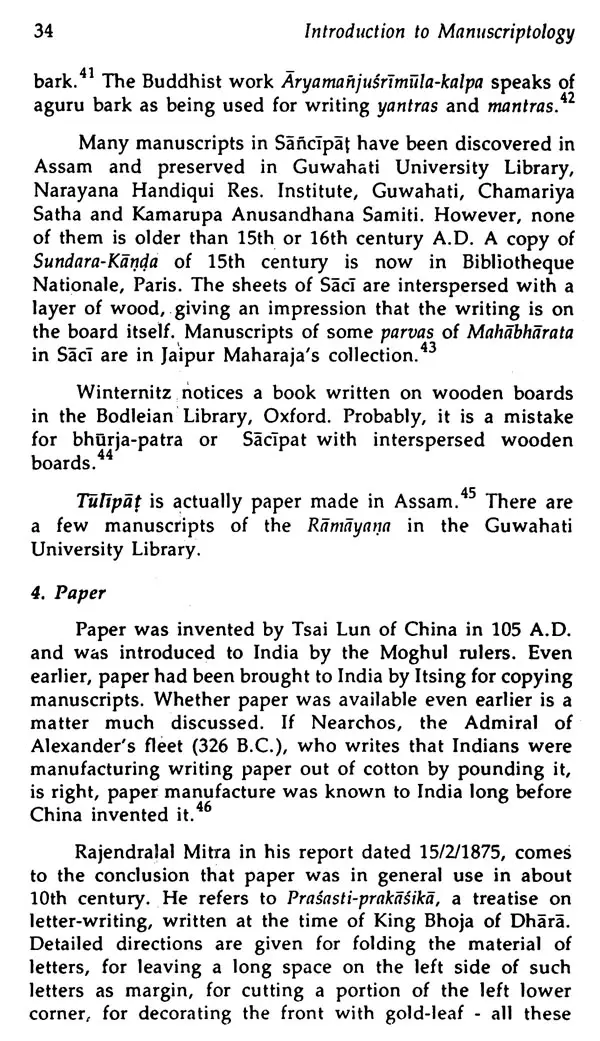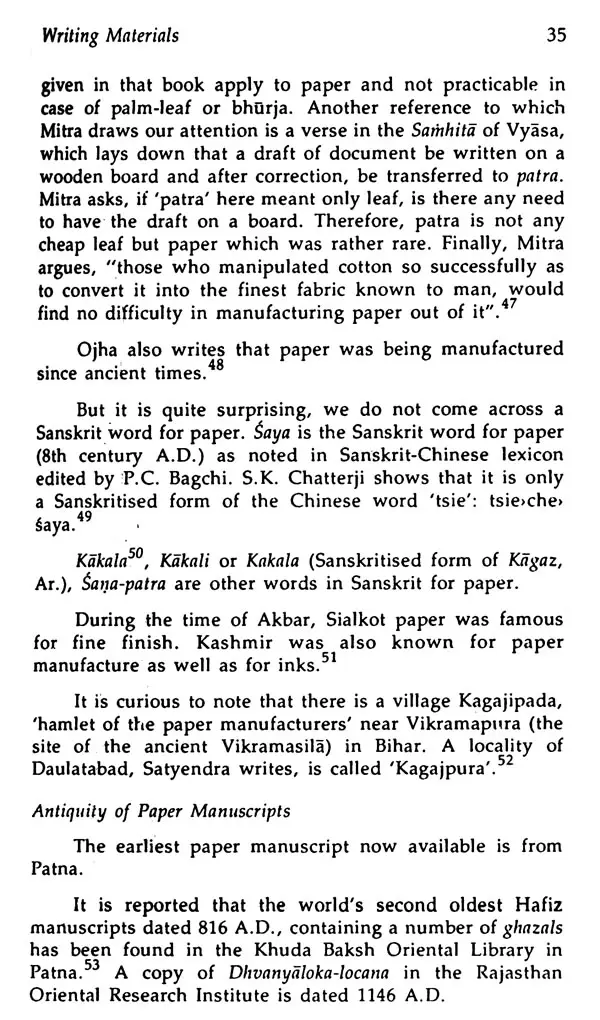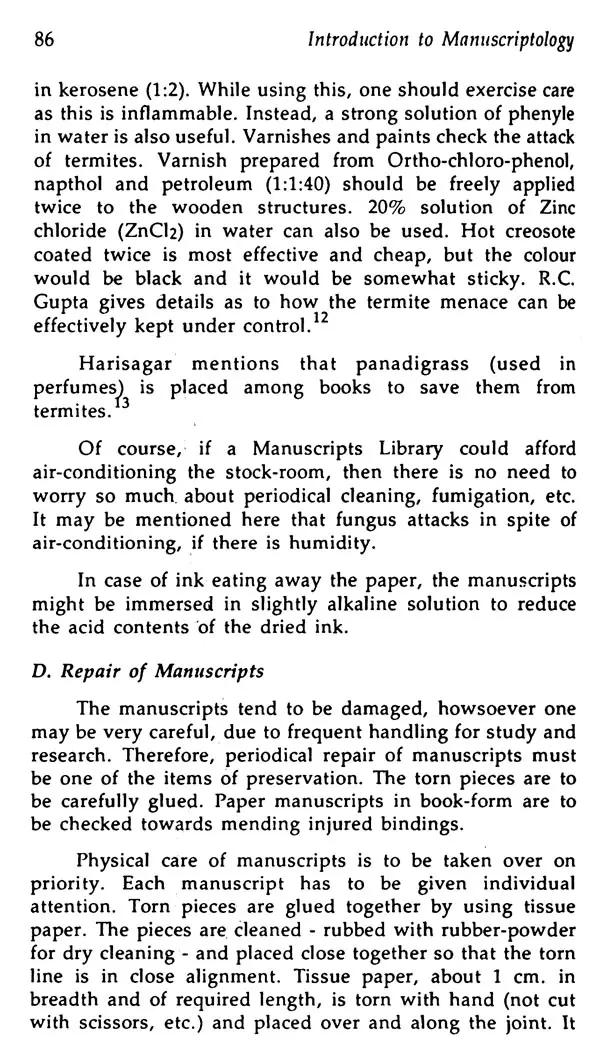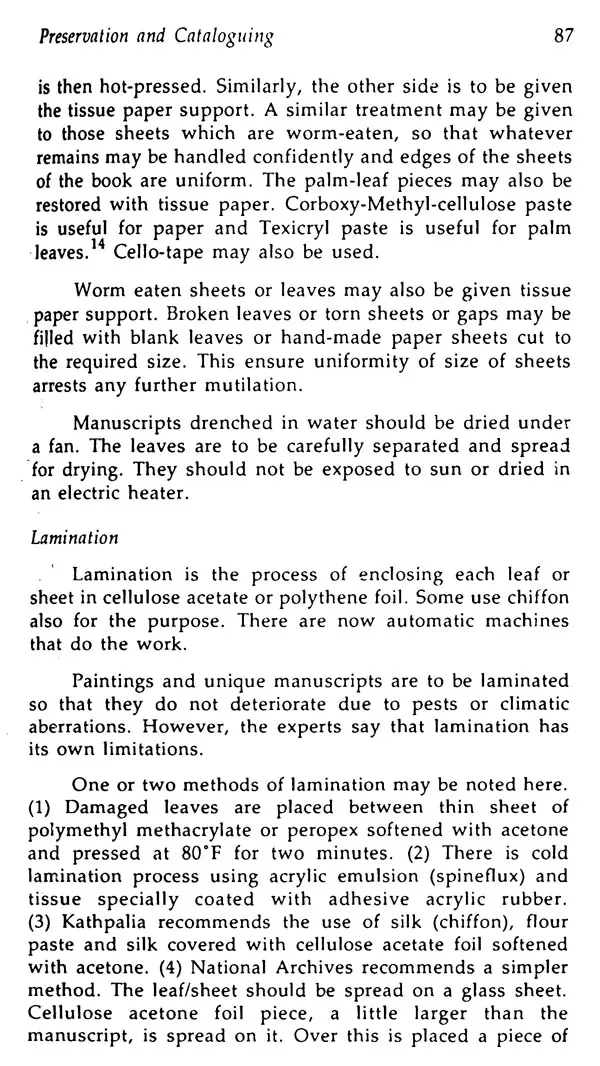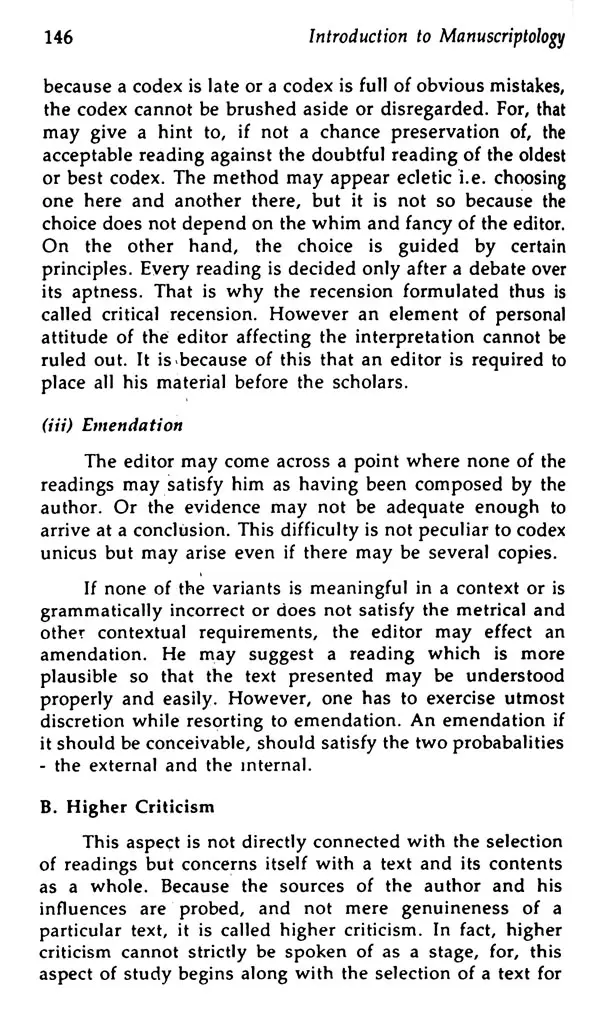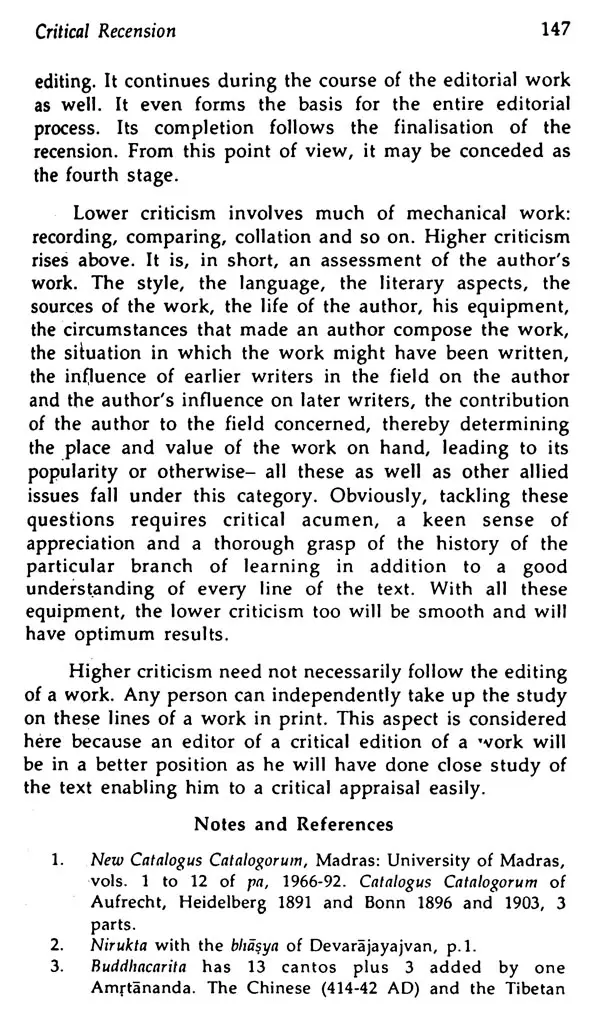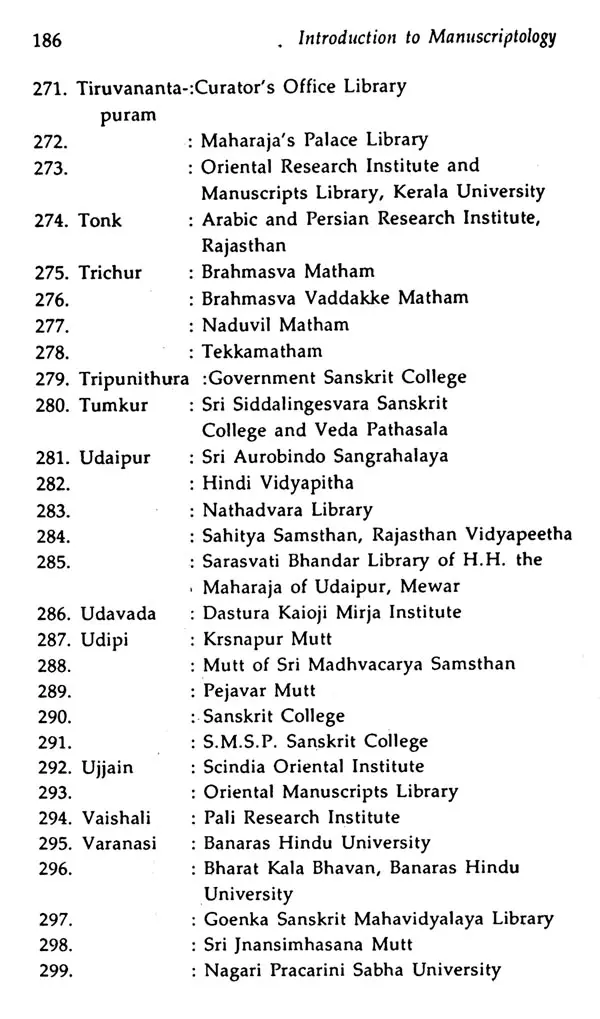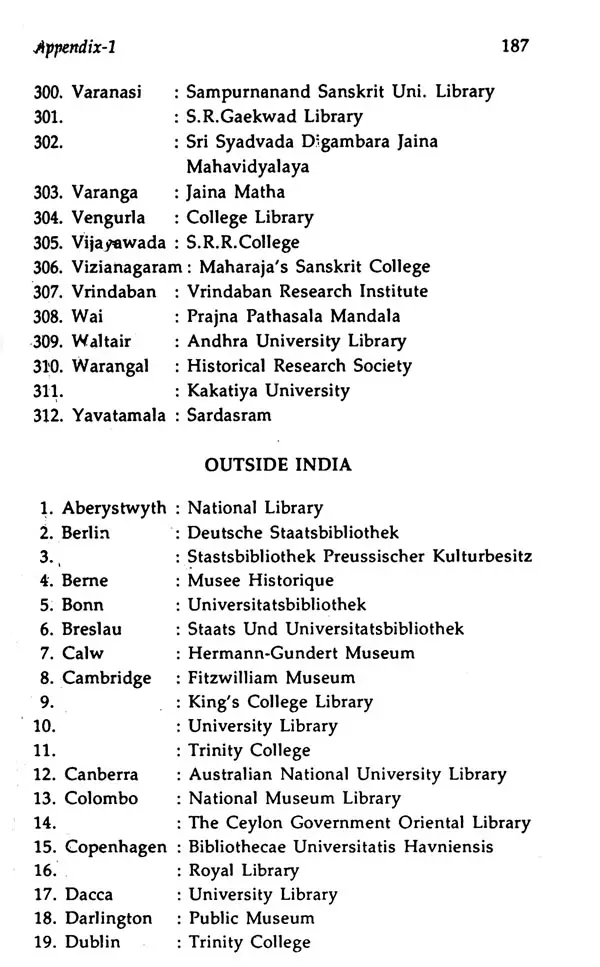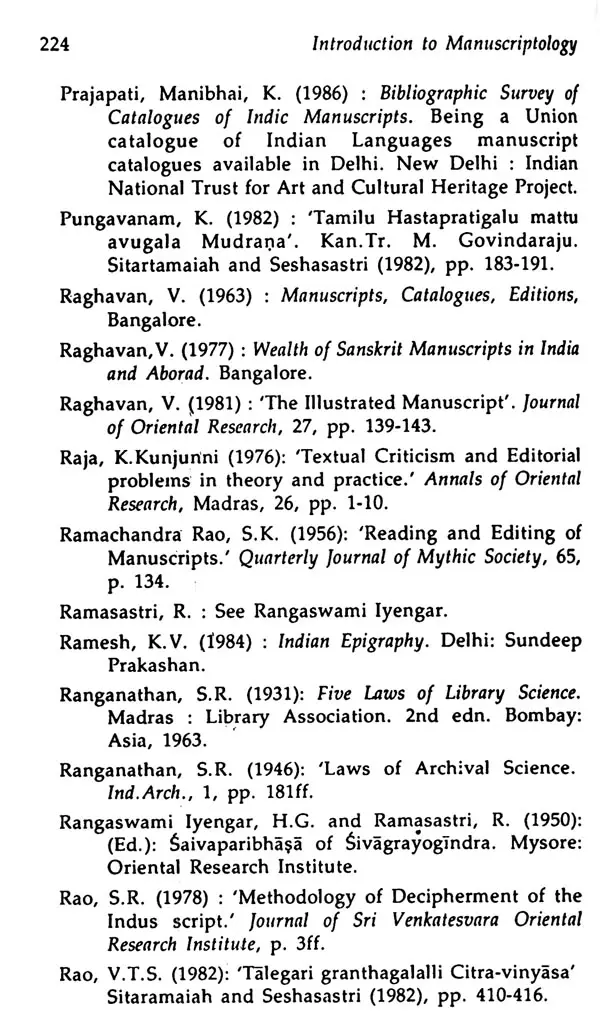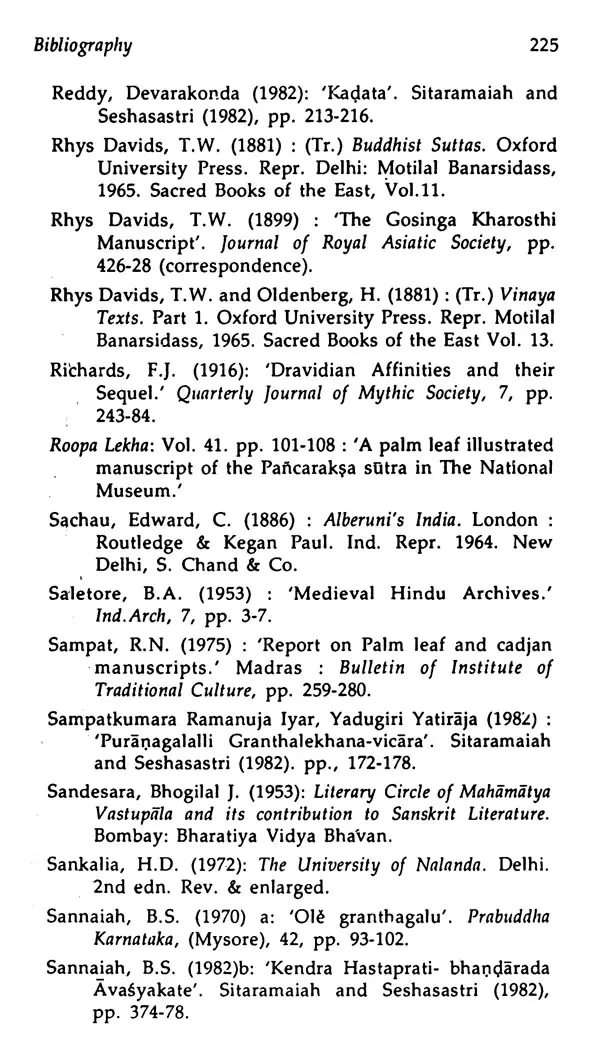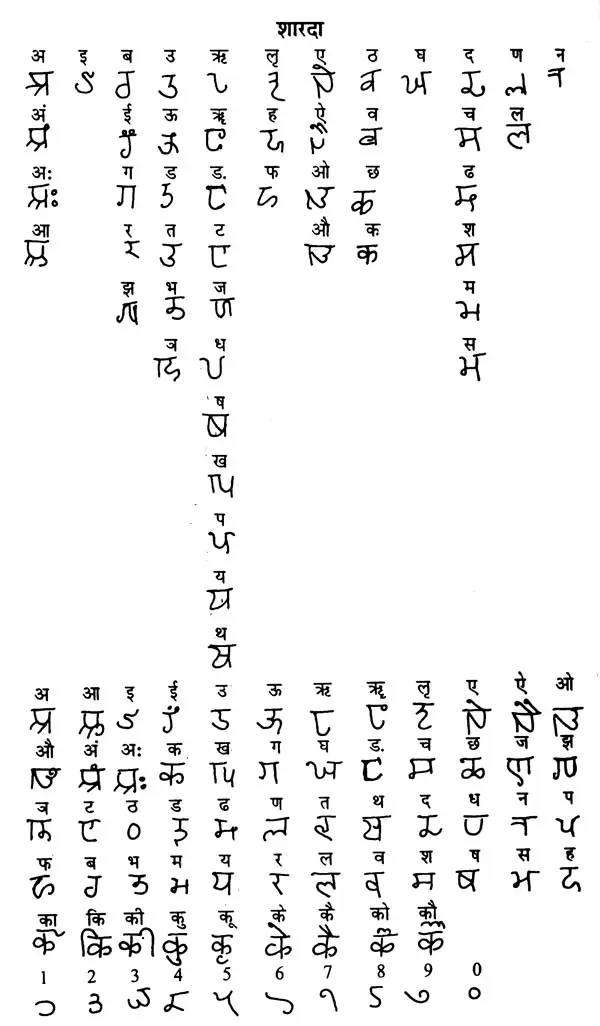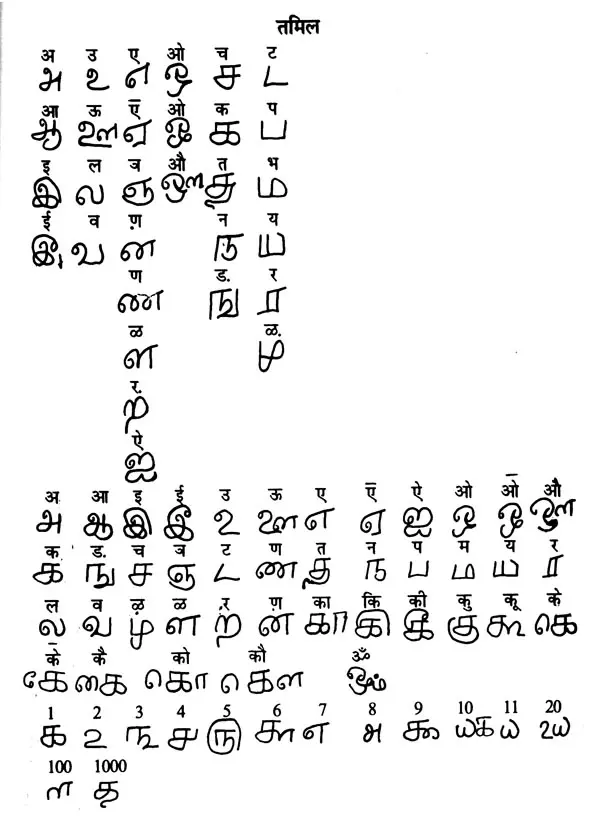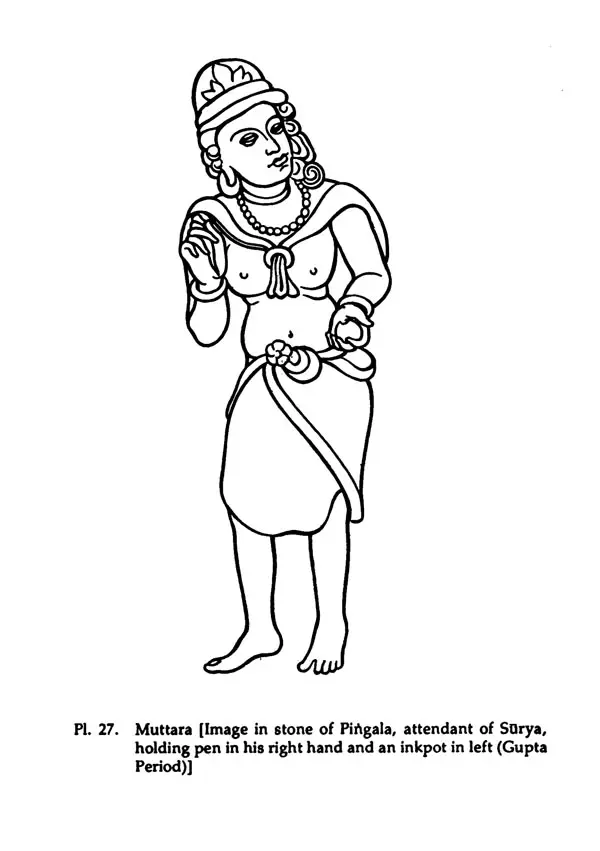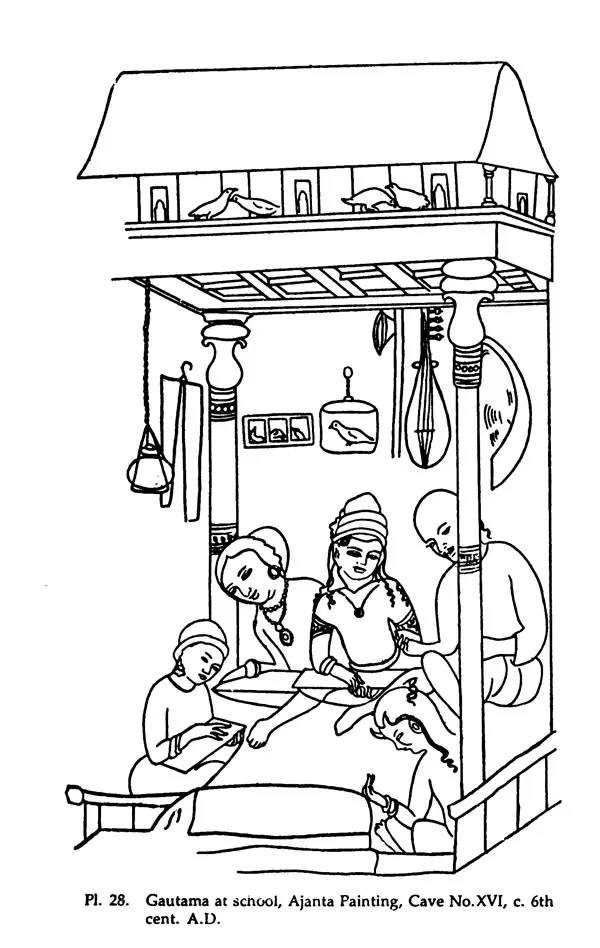
Introduction to Manuscriptology
Book Specification
| Item Code: | UAF817 |
| Author: | R.S. Shivaganesha Murthy |
| Publisher: | Sharada Publishing House, Delhi |
| Language: | English |
| Edition: | 1996 |
| ISBN: | 8185616264 |
| Pages: | 286 (5 B/w Illustrations) |
| Cover: | HARDCOVER |
| Other Details | 9.00 X 6.00 inch |
| Weight | 490 gm |
Book Description
The ancient manuscripts have a link between the past and the. present. Sanskrit was for a long time the medium of instruction, particularly higher education. Hence Sanskrit works are a repository of the multifarious facets of knowledge. These ancient works are still available to us in manuscript, form. It is therefore necessary to preserve them.
Any 'intellectual evolution could get explicit expression for the advancement of knowledge and induce intellectual thought among the people. After the advent of writing system, such knowledge was transformed into written records to serve as a permanent guide to the orally transmitted knowledge. It becomes a specialty to create a record, of important subject information on a writing material. Such matters of intellect amounted to be an enormous, requiring classification into specific subjects.
That way, hundreds of manuscripts were available to the younger generations as written documents. Such ancient writings required to be studied extensively for a reconstruction of Indian literary tradition. In this direction, ancient manuscripts, inscriptions, coins, .etc... were unearthed, collected and preserved by various agencies set up for a historical study.
The ancient documents have revealed striking information’s in all the intellectual areas reflecting the scientific knowledge of the older generations in modern contexts. Such documents required, at the outset, a systematic classification and arrangement to tackle with, for an exhaustive study in order to draw significant conclusions.
This systematic and scientific approach towards research in the area came to be known as "textual criticism."
Critical editing of ancient manuscripts is a process of selecting the most acceptable reading of a work, which its author might have Written. This is done on the basis of various readings available in the copies of the manuscript of a work collected from different sources. In the presence of copies of a manuscript, it is worthwhile to examine them from various aspects of ‘the subject and language to avoid possible corruptions in the text. Therefore, each copy of the manuscript of the text is to be studied thoroughly from the point of view of orthographic peculiarities and scribal stylistics, in determining the trustworthiness of the codices.
Almost all texts in Sanskrit have commentaries written on them. Many commentaries are earlier than the available codices and they provide clear evidence of the readings accepted during their times. Though these commentaries also have come down to us. in a line of transmission, chances of corrupt readings are very rare. The commentators often discuss the variant readings and add to the editor's knowledge of the situation. Secondly, the translation of a Sanskrit work into any target language, anthologies, quotations, obvious imitations, epitomes, adaptations, parallel versions, etc., should be consulted as important documents.
Book's Contents and Sample Pages
